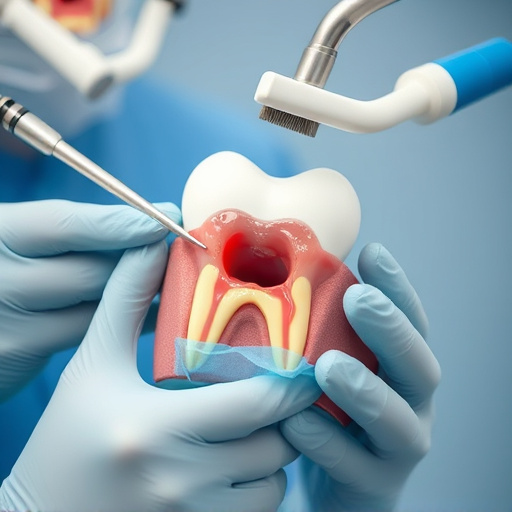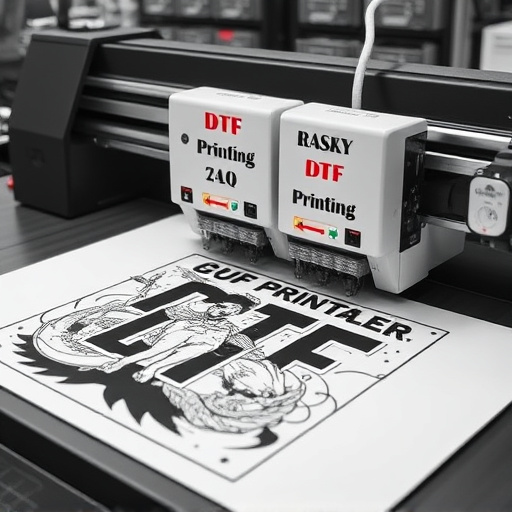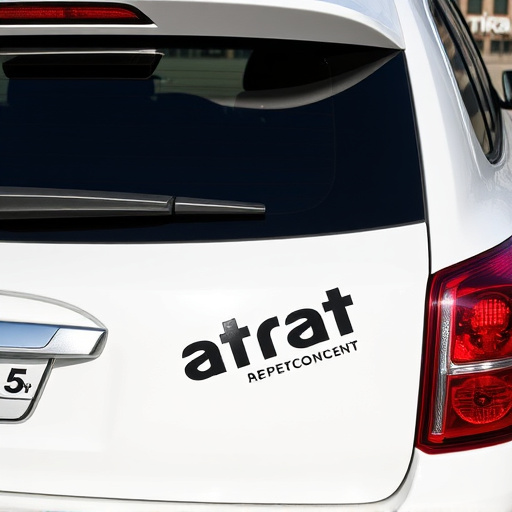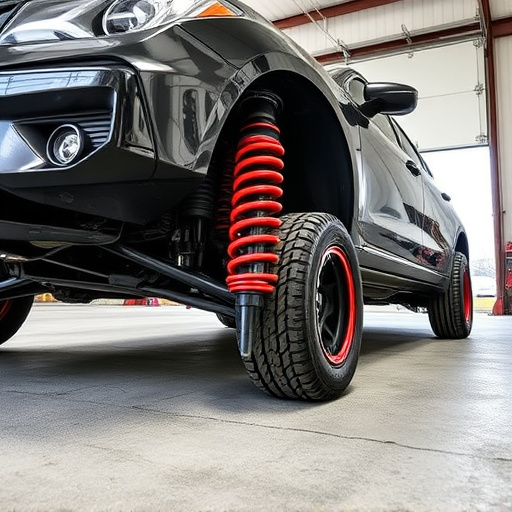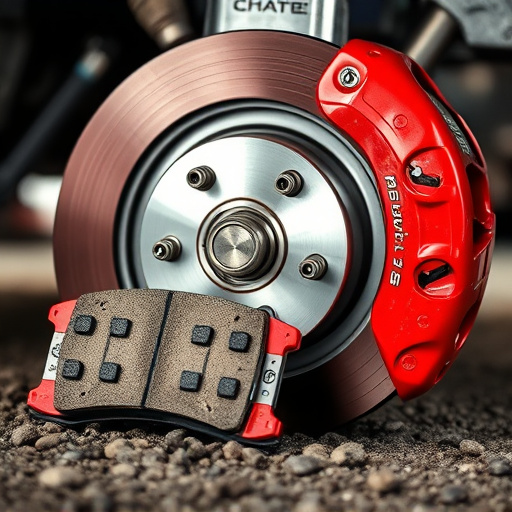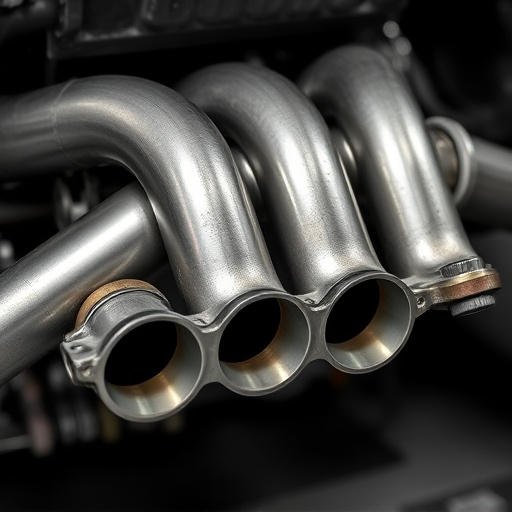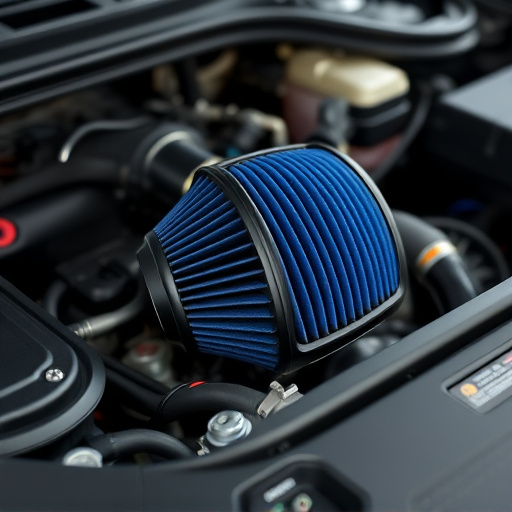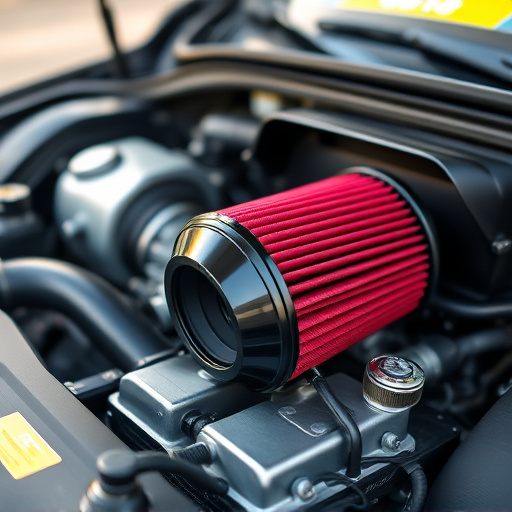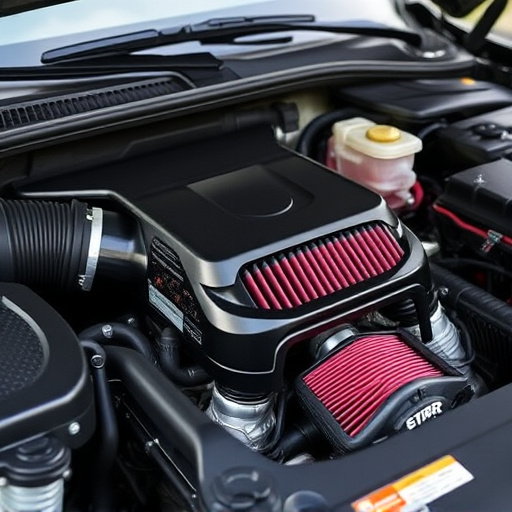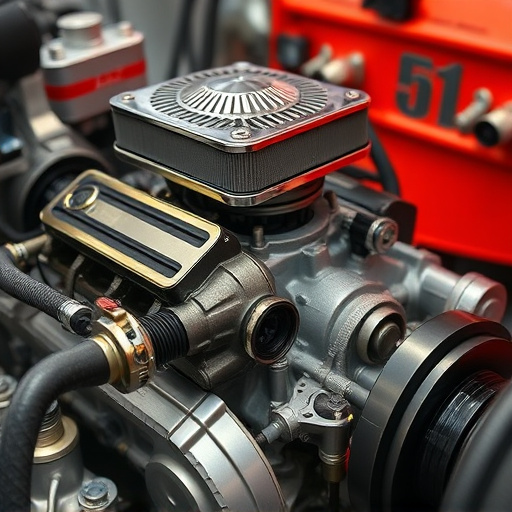Engine air intake (EAI) is a critical system for optimal vehicle performance and emissions control. Key components like filters and manifolds ensure clean air delivery to cylinders. Modern advancements like variable valve timing and direct injection further optimize EAI. Modifications to exhaust or suspension can indirectly affect EAI, emphasizing its intricate role in overall vehicle dynamics and environmental compliance.
Engine air intake, a fundamental component of internal combustion engines, plays a pivotal role in both performance and emissions control. Understanding how air enters the engine is crucial for effective pollution mitigation strategies. This article delves into the intricate relationship between engine air intake systems and emissions control, exploring basic principles, their influence on emissions reduction, and the advanced technologies driving environmental compliance in the automotive sector. By examining these aspects, we gain insights into the continuous efforts to enhance both engine performance and ecological sustainability.
- Understanding Engine Air Intake Basics
- The Role of Air Intake in Emissions Control
- Advanced Technologies Shaping Emission Reduction Efforts
Understanding Engine Air Intake Basics
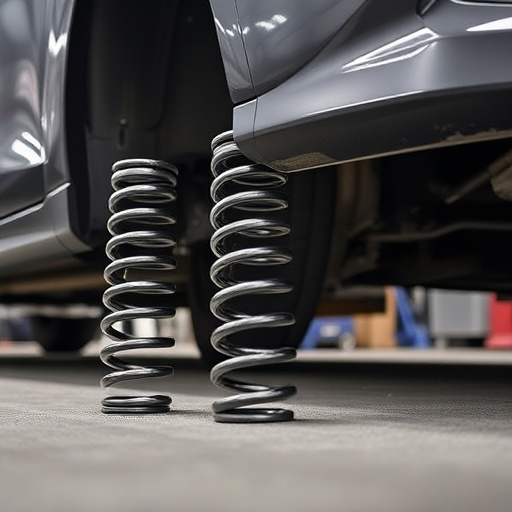
Engine air intake is a fundamental aspect of an internal combustion engine’s performance and efficiency. At its core, it involves the process of drawing in clean, oxygen-rich air from the atmosphere to support optimal fuel combustion within the engine. This critical system serves as the gateway for essential elements required for the engine to operate effectively. Understanding how air intake works is crucial when considering the broader context of emissions control systems, as it significantly influences the overall efficiency and environmental impact of a vehicle.
The basic components of an engine air intake system include the air filter, which traps contaminants, and the air intake manifold that routes the clean air to each cylinder. Modern vehicles often incorporate advanced technologies such as variable valve timing and direct injection to optimize air-fuel mixture delivery. Furthermore, modifications like cat-back exhaust systems or suspension kits can indirectly impact air intake by altering engine tuning and performance characteristics, underscoring the interconnectedness of these systems in vehicle dynamics and emissions control.
The Role of Air Intake in Emissions Control
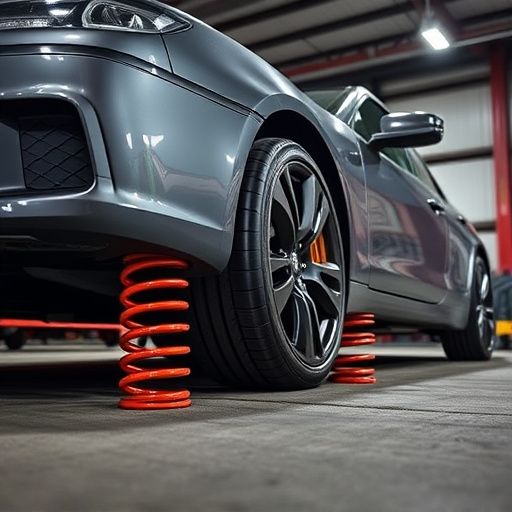
The engine air intake system plays a pivotal role in an automobile’s emissions control mechanisms. It acts as the gateway for atmospheric air to enter the combustion chamber, and its design significantly impacts the overall efficiency of the vehicle’s pollution-reducing systems. A well-optimized air intake ensures that the right amount of clean air reaches the engine, facilitating precise fuel burning and minimizing harmful emissions.
By controlling the flow of air, various components within the air intake system, such as air filters, help trap particulate matter and pollutants before they enter the engine. These intake components contribute to improving vehicle performance by maximizing airflow while also reducing the likelihood of emissions escaping through leaks or inefficient routes, thereby enhancing overall environmental compliance.
Advanced Technologies Shaping Emission Reduction Efforts
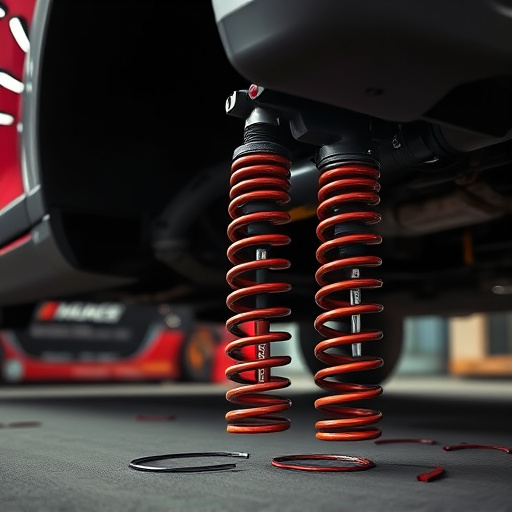
In the pursuit of cleaner air and stricter emission standards, advanced technologies are playing a pivotal role in shaping emission reduction efforts. One such area of focus is the engine air intake, which has witnessed significant innovation over the years. Modern engines are now equipped with sophisticated sensors and control modules that optimize air-fuel ratios, ensuring efficient combustion and reduced pollutant emissions. These systems, often supported by advanced engine management software, can dynamically adjust settings based on various driving conditions, leading to improved performance and environmental compliance.
Furthermore, the integration of components like coilover kits and high-performance air filters enhances the engine’s overall efficiency. While cat back exhaust systems and tailored exhaust configurations contribute to noise reduction and improved gas flow, they also play a crucial role in post-combustion emission control, filtering out harmful gases before they are released into the atmosphere. This holistic approach, combining advanced air intake technologies with refined exhaust systems, is instrumental in achieving significant emissions reductions without compromising on engine performance or driving dynamics.
Engine air intake plays a pivotal role in emissions control, influencing the performance and efficiency of systems designed to reduce pollutants. By understanding the fundamentals of air intake and embracing advanced technologies, we can continue to optimize emission reduction efforts for a cleaner, more sustainable future. These innovations not only enhance environmental protection but also contribute to the overall improvement of engine performance and fuel efficiency.



